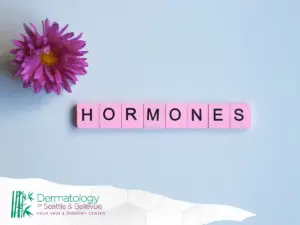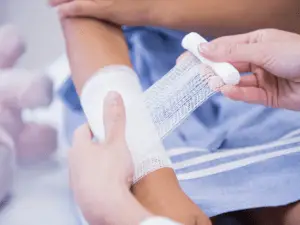Skin cancer affects people of all ethnicities, yet awareness around skin cancer in skin of color remains limited. Many believe that darker skin tones offer complete protection, but this is a dangerous myth. Understanding the risks, debunking common misconceptions, and adopting effective prevention strategies are crucial steps in protecting diverse communities. This article explores key facts and actionable advice for people of color to stay vigilant and proactive about their skin health.
Skin Cancer Risks for People of Color
While skin cancer rates are lower among people with darker skin tones, these populations are not immune. Certain risk factors may disproportionately affect people of color, sometimes leading to later-stage diagnoses and worse outcomes. Recognizing these risks empowers individuals and healthcare providers to focus on education, early detection, and culturally sensitive care. Additionally, addressing myths about skin cancer screening is crucial in promoting awareness among communities of color. Many individuals may believe that skin cancer only affects those with lighter skin, leading to a lack of proactive screening and prevention measures. By dispelling these myths, we can encourage earlier intervention and better health outcomes for all skin types.
Higher Risk Factors
- History of significant ultraviolet rays exposure, especially in outdoor workers or individuals with tanning habits
- Presence of moles or lesions that change in appearance
- Immunosuppression due to medical conditions or treatments
- Prior diagnosis of skin cancer or family history of the disease
- Exposure to carcinogens or chronic skin irritation
- Certain ethnicities, such as Asian or Black people, may face unique risks due to variations in melanin distribution and pigment patterns
Lesser Known Risks
Beyond the commonly recognized factors, there are lesser-known risks that can impact people of color:
- Skin cancers often develop in less sun-exposed areas such as the palms, soles, under nails, and mucous membranes.
- Delayed diagnosis due to atypical presentation or lack of awareness among patients and healthcare providers.
- Higher likelihood of developing aggressive types like melanoma in uncommon locations.
- Underrepresentation in clinical research leading to gaps in understanding and tailored treatment approaches.
Common Misconceptions
Misconceptions about skin cancer in skin of color contribute to underdiagnosis and late treatment:
- Believing darker skin is completely immune to skin cancer
- Assuming sun protection is unnecessary due to natural pigment
- Confusing early signs of cancer with benign conditions like eczema or acne
- Overlooking warning signs because of less frequent self-examination or skin care focus
Myths About Skin Cancer in Skin of Color
Myth 1: People of Color Cannot Get Skin Cancer
One of the most dangerous myths is that people with darker skin are immune to skin cancer. While the incidence is lower compared to lighter-skinned individuals, skin cancer does occur and can be more deadly in people of color due to delayed diagnosis. Awareness and vigilance are key to overcoming this misconception.
Myth 2: Darker Skin Tones Provide Natural Protection
Darker skin tones have more melanin, which offers some protection against ultraviolet rays. However, this protection is not absolute. People of color can still suffer DNA damage from UV exposure, leading to skin cancer. This myth often leads to complacency regarding sun protection.
Myth 3: Sunscreen is Not Necessary for People of Color
Some believe sunscreen is only for lighter skin tones, but everyone benefits from protecting their skin against UV radiation. Sunscreen helps prevent not only skin cancer but also premature aging and pigmentation disorders in all skin colors. Incorporating broad-spectrum sunscreen into daily skin care routines is essential for everyone.
Prevention Strategies for Skin Cancer in Skin of Color
Preventing skin cancer in people of color involves a combination of awareness, protective habits, and regular monitoring. Tailoring prevention strategies to diverse skin tones ensures better outcomes and empowers individuals to take control of their skin health.
Importance of Sun Protection
- Using broad-spectrum sunscreen daily, even on cloudy days
- Wearing protective clothing such as hats, sunglasses, and long sleeves
- Seeking shade during peak sun hours to reduce UV exposure
- Avoiding tanning beds which significantly increase cancer risk
Sun protection is a critical and effective way to minimize DNA damage and reduce the incidence of skin cancer across all populations.
Regular Skin Checks
- Performing monthly self-examinations to detect new or changing lesions
- Paying special attention to less obvious areas like palms, soles, under nails, and mucous membranes
- Scheduling annual professional skin checks with a dermatologist, especially for individuals with a history of skin cancer or high-risk factors
- Early detection dramatically improves prognosis and expands treatment options
Seeking Professional Help
Consulting a dermatologist for any suspicious or changing skin lesions is essential for early diagnosis and effective treatment. People of color should seek care at dermatology clinics experienced in multicultural dermatology to ensure proper evaluation tailored to diverse skin types. Early medical attention can prevent complications and improve survival rates.
Overcoming Barriers to Skin Cancer Prevention
Despite the risks, many people of color face challenges that hinder effective prevention and treatment of skin cancer. Addressing these barriers is crucial to closing gaps in health outcomes.
Lack of Awareness
A significant obstacle is the lack of awareness about skin cancer risks among people of color. Misinformation and myths contribute to low rates of skin cancer awareness and late-stage diagnoses. Educational campaigns and community outreach are vital to spread accurate information and encourage proactive skin care. These initiatives must also address skin cancer misdiagnosis factors, which can further complicate treatment and outcomes for individuals in these communities. Collaborating with healthcare professionals to create culturally relevant materials can enhance understanding and prevention efforts. Additionally, promoting regular skin checks and highlighting the importance of early detection can save lives and reduce disparities in health care access.
Cultural and Societal Stigma
Cultural beliefs and societal attitudes can discourage people of color from seeking dermatologic care or acknowledging skin cancer risks. Some communities may prioritize other health issues or perceive skin cancer as a concern only for lighter-skinned individuals. Overcoming these stigmas requires culturally sensitive education and open conversations within communities to promote healthy behaviors.
Accessibility to Healthcare
Barriers such as limited access to dermatology specialists, cost concerns, and lack of insurance coverage disproportionately affect people of color. These challenges can delay skin cancer detection and treatment, worsening outcomes. Efforts to improve healthcare accessibility and equity are essential in addressing these disparities.
Advocating for Skin Cancer Awareness in Communities of Color
- Supporting outreach programs that educate diverse populations about skin cancer risks and prevention
- Encouraging representation of people of color in dermatology research and clinical trials
- Promoting community health initiatives that provide free or low-cost skin cancer screening
- Fostering partnerships between healthcare providers and cultural organizations to build trust and increase awareness
Collective action is key to reducing the burden of skin cancer and improving health care outcomes in multicultural populations.




